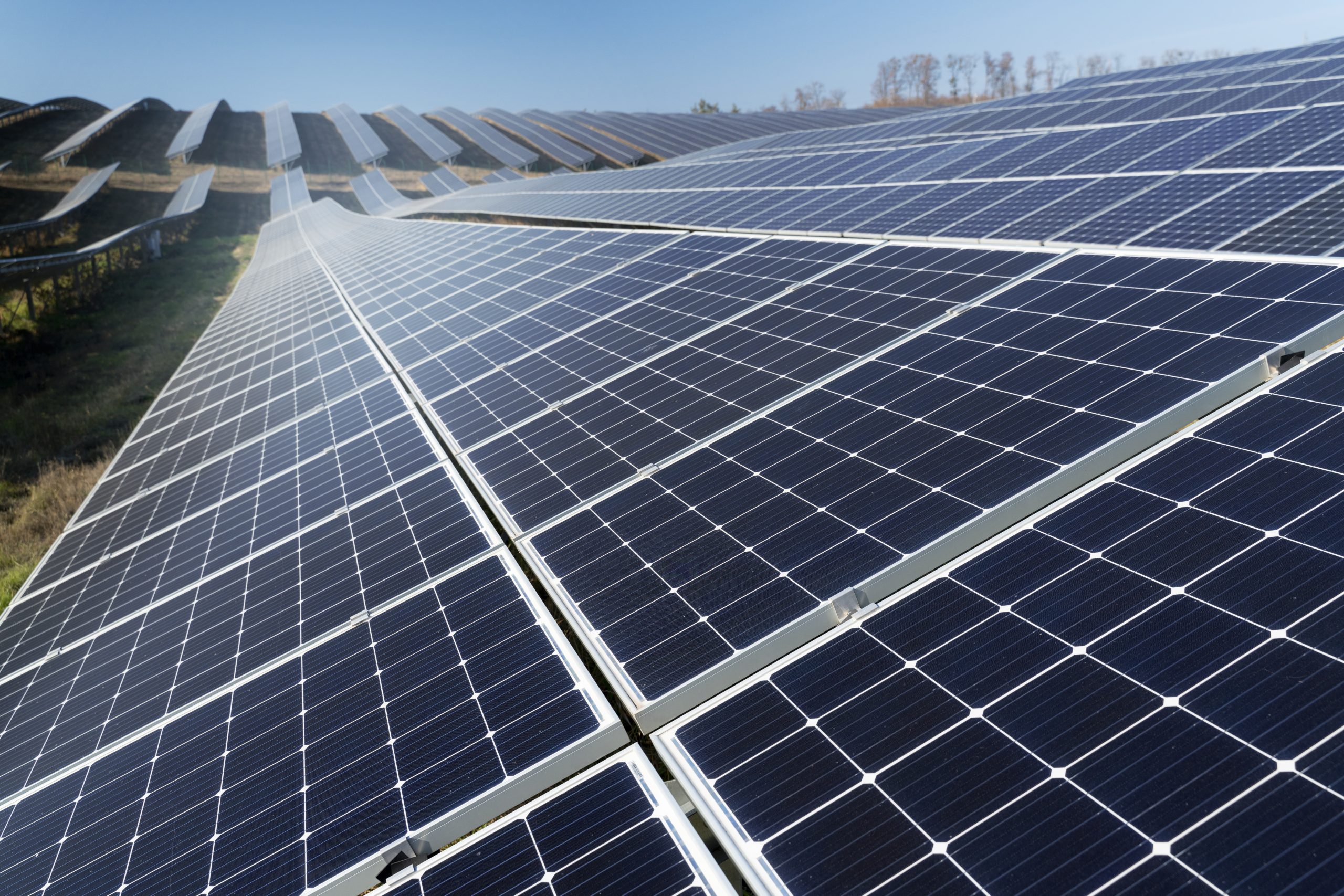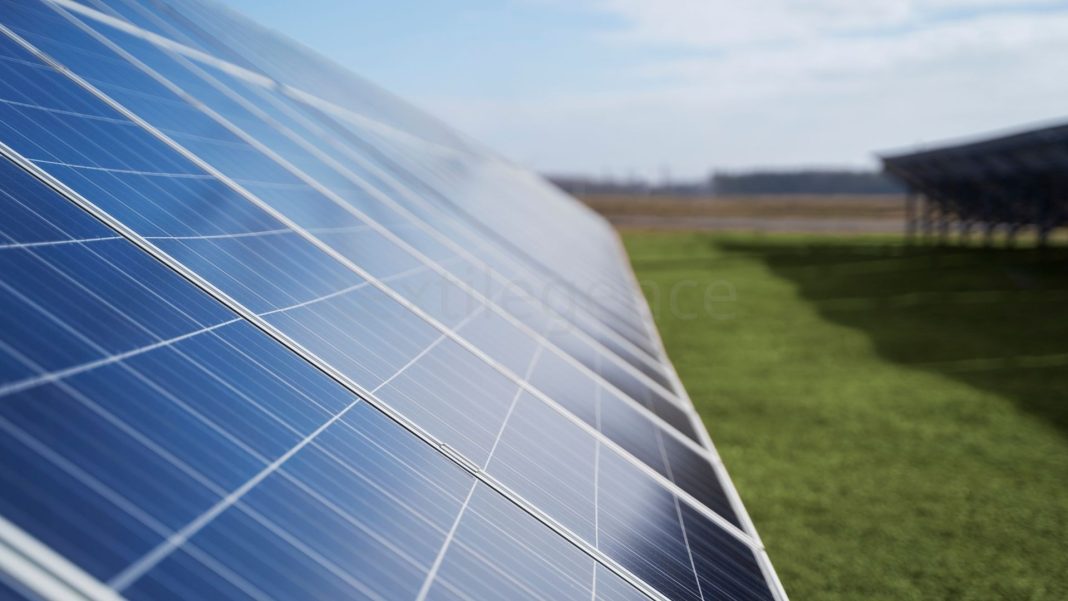Today, investments in solar panels continue to increase worldwide, including in Türkiye, as part of the transition to green energy in industrial production. While the use of green energy has an important place in the fight against the climate crisis, solar energy is among the most preferred options. However, although solar energy offers an environmentally friendly solution as a clean energy source, the panels that convert this energy into electricity can become a potential environmental problem after their useful life is completed.
The International Renewable Energy Agency (IRENA) said that the amount of scrap panels in 2016 was approximately 250,000 tons, and predicts that this could reach 78 million tons in 2050. It is stated that an average of 3.3 million solar panels will be scrapped every year.
Research has been conducted since the early 2000s on how to recycle end-of-life (EOL) photovoltaic (PV) panels. In Türkiye, last year, Ahiler Development Agency initiated a feasibility study on the recycling of photovoltaic (PV) panels in collaboration with METU-GÜNAM (Solar Energy Research and Application Center). Within the scope of the feasibility study, a workshop was held on June 25, 2024 to discuss the current status of the industry and future projections.
On April 15, 2025, Ahiler Development Agency announced that it had completed the Photovoltaic Panel Recycling Feasibility Report, which was prepared to examine the importance of recycling photovoltaic (PV) panels, the current situation in the world and in Türkiye, and the feasibility of a facility to be established for this purpose, and indicated Niğde as the strongest candidate for the facility.
Approximately 3 tons of panels will be processed annually in the recycling line
While solar power plant installations in Türkiye are concentrated particularly in the Central Anatolia and Southeastern Anatolia regions, provinces such as Konya, Ankara, Kayseri, Gaziantep, and Şanlıurfa are leading in terms of installed capacity. Due to factors such as the existing industrial experience in waste recycling, the region being located in the middle of the Turkish solar power plant map, and strong logistics and transportation opportunities, Niğde stands out as an ideal location for the EOL PV recycling facility. In this context, the facility is planned to provide service in a single-story building with a total indoor area of 2,400 m² on an area of 5,000 m² within the Niğde Bor Mixed and Leather Specialized Organized Industrial Zone within the borders of the Bor district of Niğde.
It is anticipated that the company will not be the only company providing recycling services, but will create awareness in the solar energy industry with its pioneering position and effective promotion. It is assumed that it will be able to obtain and process 75% of the existing PV panel waste in Türkiye, as long as the capacity utilization rate (CUR) is not 100%.
The recycling line capacity is taken as 1500 kg panel processing per hour and 3,057,600 kg panel will be processed annually, which corresponds to approximately 152,800 PV panels. In the calculation, it is assumed that a typical photovoltaic panel has an average power of 400 watts, weighs 20 kg and measures 1000*1950*40 mm. The scrap value is accepted as the entire land price, 50% of the construction price, and 20% of the machinery and equipment.
Within the scope of this feasibility study, it is assumed that the facility will pay a fee of 50% of the panel’s scrap value for the supply of PV panel waste and that there is no special state support for PV panel recycling processes. It is assumed that the facility will be exempt from investment period VAT obligations by obtaining an investment incentive certificate. It is stated that the calculations are made in US Dollars (USD) and the exchange rate of 36.1060 per 1 USD announced by the Central Bank of the Republic of Türkiye on 14.02.2025 is taken as basis for the conversions made from Turkish Lira.

Initially, only k-Si type PV panels will be recycled
The company is initially planning to focus solely on recycling k-Si type PV panels. One of the reasons for this is that since k-Si panels are used to a very large extent (92%) both in the world and in Türkiye, a much lower waste flow is expected for other types of PV panels. It is also stated that since k-Si technologies dominated the market in the 2010s when solar power plants first became widespread in Türkiye, thin film panels were rarely used there.
However, if very significant technological breakthroughs emerge in the field of thin film and perovskite panels, their attractiveness increases in terms of feasibility and their areas of use expand, it is said that there may be an increase in their market share. In such a case, since the company will have already completed its establishment for k-Si and reached a certain maturity, it is reported that investments in these technologies may also be on the agenda.
The main activities of the facility are as follows; Panel Collection and Transportation, Panel Dismantling and Separation, Material Recovery, Waste Management and Disposal, Quality Control and Testing, Research and Development (R&D), Customer and Supplier Management, Legal Compliance and Reporting.
“A serious flow of solar panel module waste will begin in Türkiye in 2030-2035”
In a statement he made to AA, METU-GÜNAM Expert Researcher Tayfun Hız said that a serious flow of solar panel module waste will begin in Türkiye around 2030-2035, and that assuming that the average installed power of the first solar energy modules in Türkiye is 230-250 watts and the current average installed power is 450 watts, more than 40 million photovoltaic modules are in operation. “40 million modules, again on average, equals 800 thousand tons. 90 percent of a panel can be recycled. If we achieve the 52.9 gigawatt target in 2035 determined in the Turkish National Energy Plan, this amount of waste will reach 2.4 million tons in 2060. This waste is not an ordinary material, it contains glass, aluminium, especially cells obtained from high-purity silicon, copper as a conductor and especially silver, which is a valuable commodity. Throwing all this valuable material in the trash, burying it in the ground or burning it is a huge economic loss. Moreover, it is a situation that may have environmental effects,” he stated.
Hız noted that the raw materials from which photovoltaic cells are produced are valuable in their purified form, but have a high carbon footprint, although they are limitless in nature. Underlining that there are only a few countries in the world that produce these raw materials, he said; “The simplest and most undesirable method for panels that have reached the end of their economic life is to bury them in landfills as garbage. Another option is to burn them for energy from waste. If we do not recycle, this is what happens to the panels. However, according to the principles of circular economy, undamaged solar panels should first be used somewhere else or the options of being renovated and refurbished should be evaluated”.
